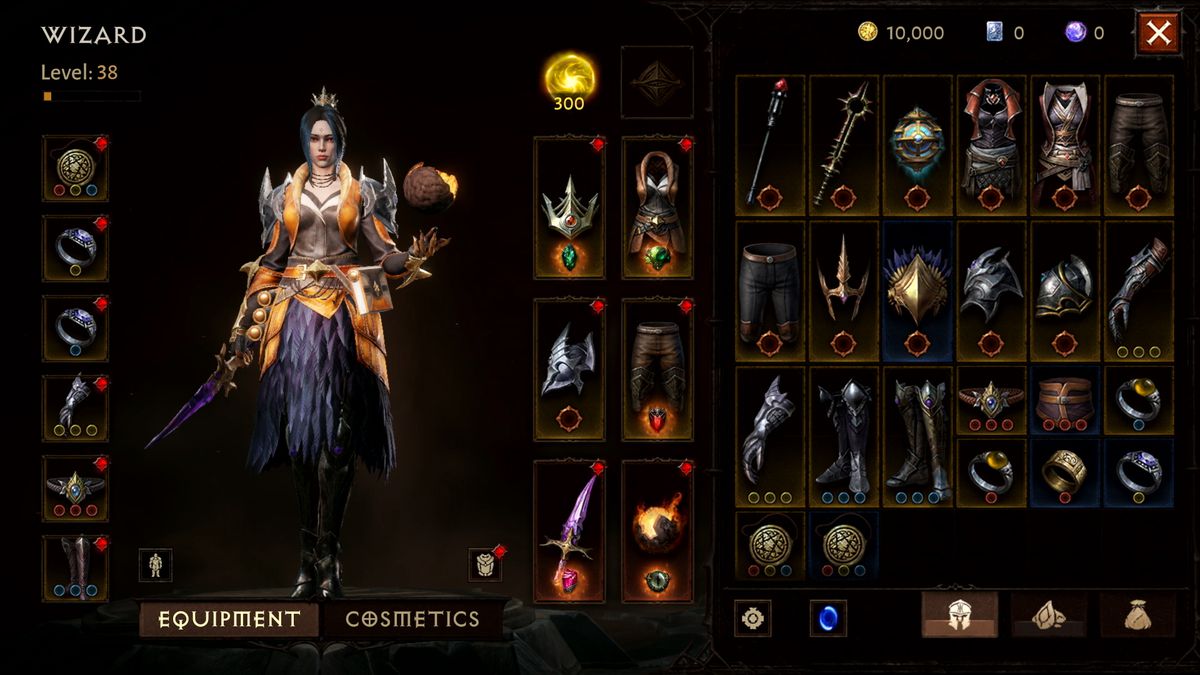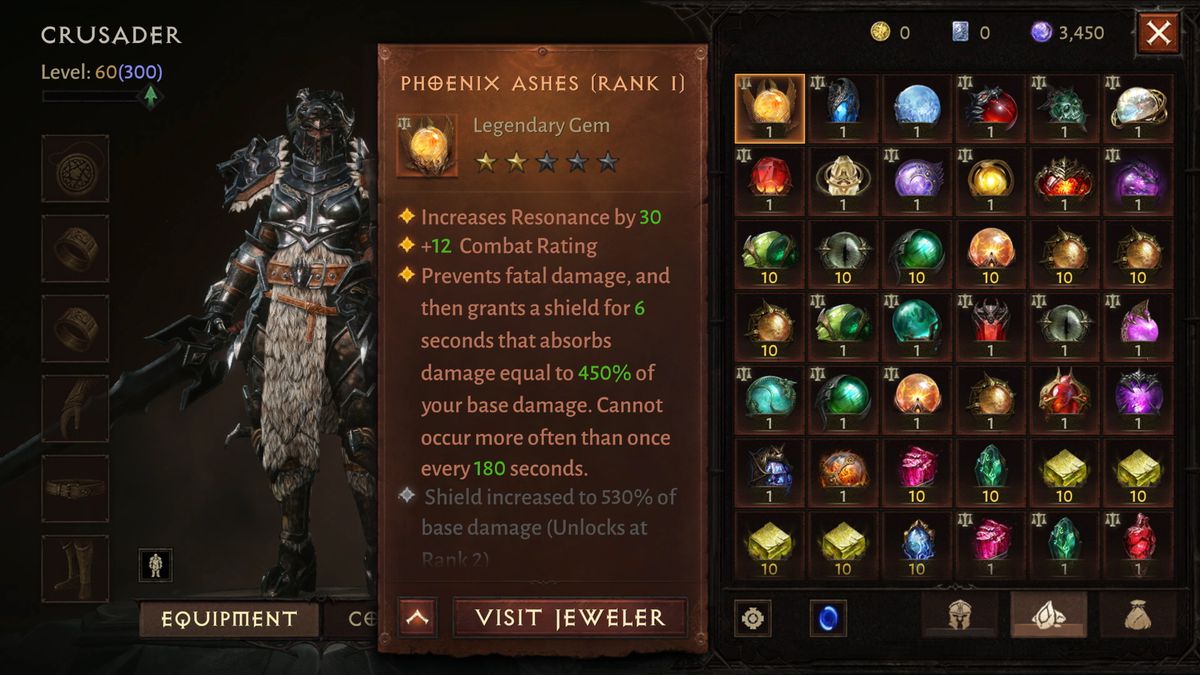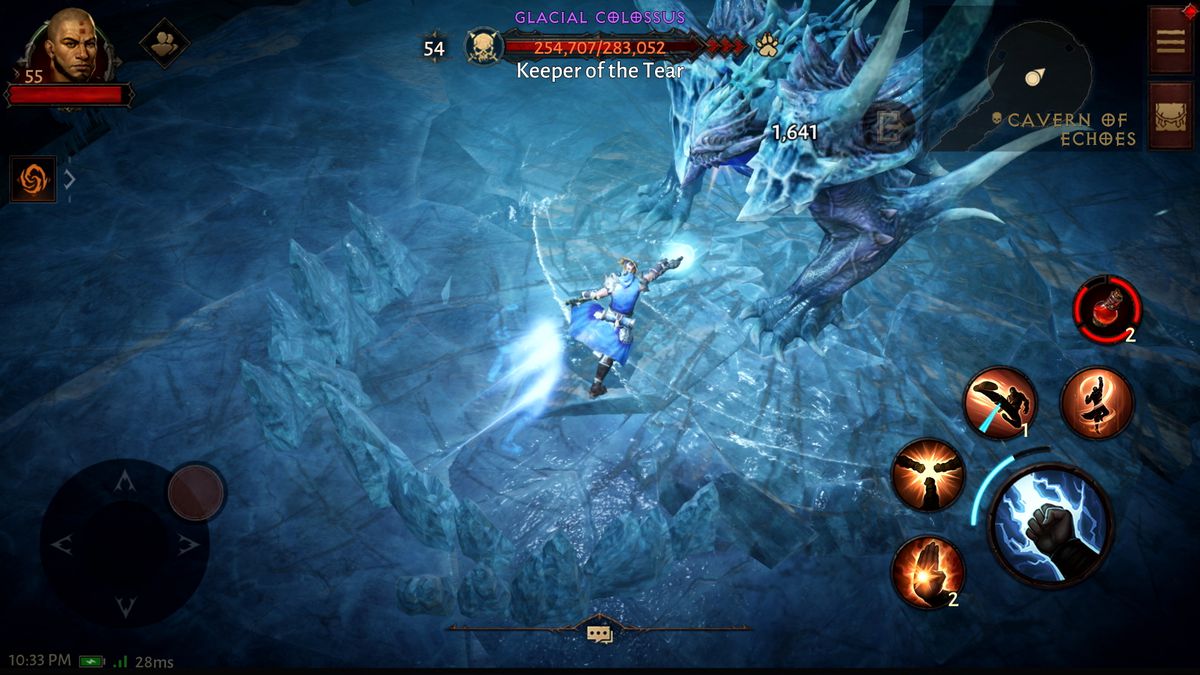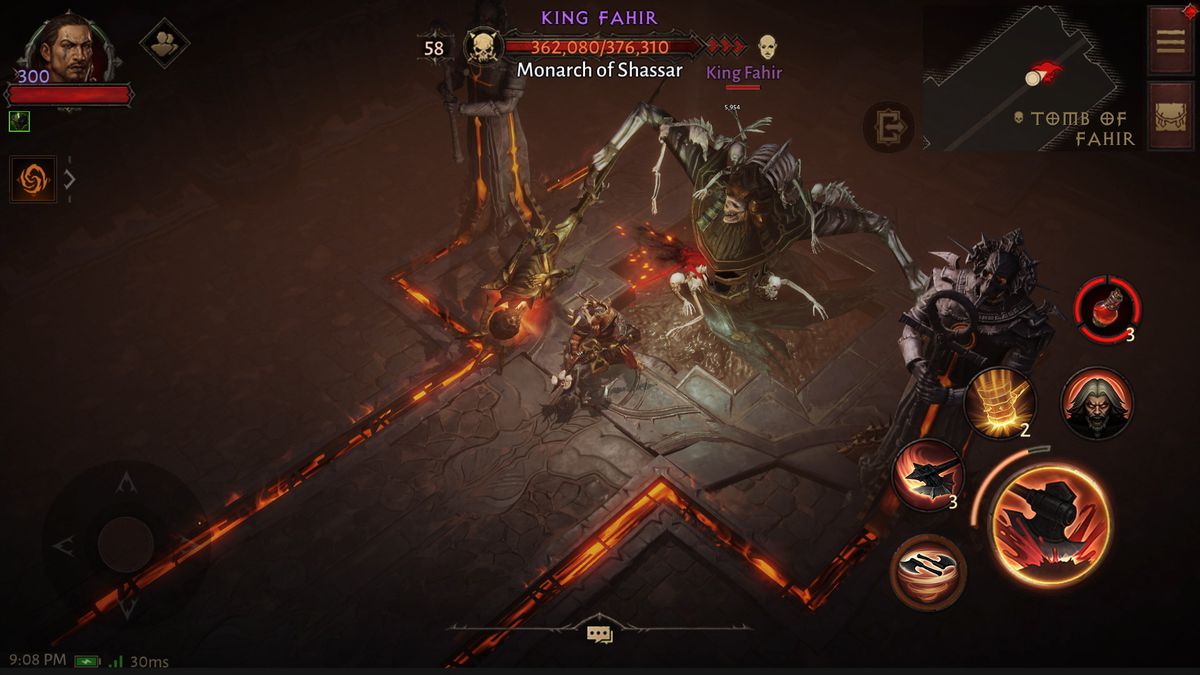A month after it launched, Diablo Immortal has among the lowest Metacritic user review scores of all time: 0.4 on iOS and 0.3 on PC. “Disgustingly designed,” reads one typical comment.
On Apple’s App Store, however, Diablo Immortal has a rating of 4.5 out of 5 stars. “Finally, a mobile game done right!” comments one user.
In their way, both these ratings are right.
Diablo Immortal is not just a new entry in Blizzard’s storied action role-playing game series, it frames Diablo in a new context. Several new contexts, actually: It’s designed primarily for mobile devices with touchscreen controls. It’s a massively multiplayer online game with a shared world, where you see other players running around. It is co-developed with a Chinese company, NetEase, and, more than any Blizzard game before it, it has been made with an eye on Asian markets. It is free to play. These are all huge sea changes for Diablo.
On the other hand, for any Diablo player — particularly any Diablo 3 player — Diablo Immortal will feel comfortingly familiar. The series’ trademark isometric perspective, frantic combat with swarms of monsters, and fountains of loot are all present. Beyond that, Immortal has clearly been built on the Diablo 3 engine and uses that game’s assets, retaining the feel and atmosphere of Blizzard’s 2012 game. Immortal’s artwork has the same richly colored, golden glow, the combat is the same intoxicating firework display, and the clang and splatter of the sound effects offer the same deep, Pavlovian satisfaction.
It’s because Immortal is the same game in a new context that the opinions of different constituencies of its audience can vary so widely. Existing Diablo fans hate the way their favorite game has been monetized in its new free-to-play incarnation, while mobile game players, who are more accustomed to this business model, are impressed with the polish, depth, and scope that Immortal has inherited from its predecessors. Neither group is wrong, so should we just chalk this up to different strokes and move on? Unfortunately not, because Diablo Immortal isn’t just at the center of a video game culture war. It’s also at war with itself.
Image: Blizzard Entertainment
You wouldn’t know it when you start playing the game. At first, Diablo Immortal is as fun to play as it sounds: a lightweight, portable, social, and quick-fire version of Diablo 3. It is also more generous and open in its design than many of its free-to-play peers. There is no energy-style mechanic restricting the amount of time you can play without paying, and none of its activities reside behind any kind of paywall. The campaign is long, luxurious, and largely free of grind. On the few occasions when you are required to level up to progress, you will find a plethora of activities away from the main quest — including bounties, replayable dungeons, and randomized “rifts” — to help you bridge the gap. In-game guides, achievements, and activity trackers shower you in rewards while helping you tour the game’s bewildering array of systems. There are even innovations here that mainline Diablo games would do well to copy, like the build guide that suggests loadouts of skills and equipment for you to work toward.
It is only if you are deeply familiar with Diablo, and its all-consuming item game in particular, that you will notice that something is up. It becomes apparent that the loot — the equippable items that can transform your character’s power, even to the point of altering how skills work — has been subtly shifted off center stage.
For one thing, equipment can be ranked up, and its rank then transferred to another item in the same slot. This means that a significant portion of progressing your character has been transferred away from getting exciting drops from monsters and into an incremental, colorless grind, whereby you salvage vast quantities of unwanted loot for scraps to feed into the upgrade machine.
For another, your items are now greatly enhanced by slotting them with legendary gems of enormous power, and this is where most complaints about Diablo Immortal’s monetization have been focused.

Image: Blizzard Entertainment
A Diablo Immortal character has six legendary gem slots. Each gem comes with a rating, from one to five stars, which cannot be changed, and which hugely impacts its power; five-star gems are much rarer drops than one-star. Legendary gems can be upgraded, and the easiest way to do this is by consuming other legendary gems. A fully upgraded gem can then be further enhanced through a “gem resonance” system that requires — you guessed it — more legendary gems, up to five more per gem slot.
If you want to maximize your character — and maximizing your character is really what Diablo is about — you need a ton of legendary gems: to find the right ones to fit your build, to roll good star ratings, to upgrade the gems you have, and eventually to slot in each gem’s additional resonance slots. It’s endless.
Among Diablo Immortal’s plethora of currencies, upgrade paths, and reward systems, legendary gems are where the business model bites hardest. Blizzard and NetEase have not been so crass as to sell them directly via a loot box or gacha mechanic, but what they have come up with is, in a way, even more troubling. Legendary gems only drop from the bosses of the randomized Elder Rift dungeons, and you can only guarantee a legendary gem drop by applying a legendary crest modifier to the dungeon before you start it. Otherwise, the drop rates for legendary gems are very low.
Without spending any money on the game, you can only get one legendary crest per month, and even buying a battle pass will only reward you with one or two additional legendary crests each month. Beyond that, you need to buy them directly. Legendary crests work out at somewhere between $2 and $3 apiece. The huge number of gems you will need to maximize your character’s equipment, especially considering the extremely low drop rates of five-star gems, is the reason the cost of maxing out your character in Diablo Immortal has been estimated at between $50,000 and $100,000 — potentially even more, if you get deep into the gem resonance system. (Rock Paper Shotgun has a very thorough cost breakdown that lands at the more conservative end of this scale.)

Image: Blizzard Entertainment
Diablo Immortal has been given an exceptionally rough ride for this business model — perhaps disproportionately, considering popular free-to-play rivals like Genshin Impact and Lost Ark are hardly free of similar gacha mechanics to lure in big-spending “whale” players. Diablo’s fame and reputation with a core PC gaming audience, earned over a quarter of a century, is surely a factor. But it’s also true that this system is uniquely problematic, and the very nature of Diablo games has something to do with that.
When you buy legendary crests, you are not buying a roll of the dice, as you do when purchasing a FIFA Ultimate Team card pack, say. You are buying a chance to load the dice, to reach into the game engine and tweak the drop rates (slightly) in your favor. The addictive gambling mechanics are not separated from the addictive gameplay mechanics, but instead tied directly into combat and loot drops within the game. Diablo is scarily well-positioned to do this; as my colleague Maddy Myers pointed out, these heavily loot-focused games have always had a slot-machine quality, which Diablo Immortal’s business model makes literal.
Blizzard has been at pains to point out that Immortal’s monetization can safely be ignored until the endgame, which is true, and it claims that the majority of players enjoy the game without spending a dime, which is plausible. But it’s disingenuous to suggest that the primary pleasure of Diablo games resides in playing through the story, rather than maxing out your character. It would be just as disingenuous to deny that these games have always been engineered to engender a hunger for hitting the power cap in their players. For people with a tendency toward gambling addiction, or toward the addictive qualities of Diablo’s item game — or, even worse, both — the legendary crest system is exploitative and potentially very damaging.
For everyone else, it simply makes Diablo less fun.

Image: Blizzard Entertainment
We have been here before, or somewhere like it. When Diablo 3 launched in 2012, it had a real-money auction house where players could buy and sell their item drops. In theory, this existed to head off the cheating and scamming that beset item trading in Diablo 2. But in order to steer players toward the auction house, Blizzard lowered loot drop rates in the game to such an extent that equipping your character became a thankless grind, and the game as a whole felt unrewarding to play. When the unpopular auction house was removed and drop rates were increased in 2014, Diablo 3 instantly became more fun, even before the innovations of the Reaper of Souls expansion elevated it to classic status.
The lesson: It might make sense on paper to try to monetize Diablo’s loot, but as soon as you do, you drain the fun out of the game. It’s the same with Diablo Immortal, and it is noticeable before you hit the endgame, because it’s baked deep into the game design. Loot drops are less impactful, while character progression is artificially throttled and thinly spread over too many systems, which are too grindy and too granular. It has been more artfully disguised than it was at the launch of Diablo 3, but it’s a similarly unrewarding slog. Buying a battle pass or spending big on legendary crests barely helps, because paying for a great item drop will never be as thrilling as just getting one.
I’m not sure if there is a way to isolate the core of what makes Diablo fun from the mechanics of free-to-play monetization. If there is, Blizzard and NetEase have not found it. They’ve made a mobile Diablo that is slick, enjoyable, and even generous at first. But if you spend enough time with it, there’s no escaping the fact that the heart of the game has been cut out, chopped up, and sold back to you piecemeal.











